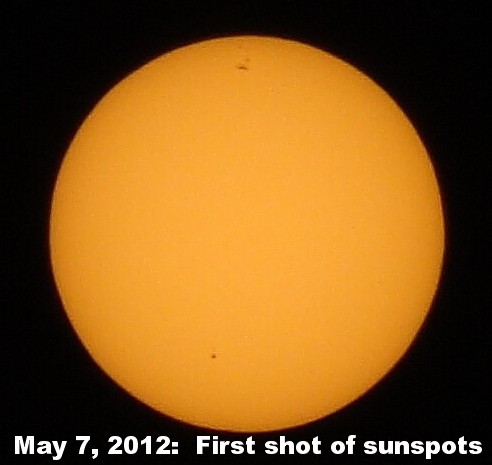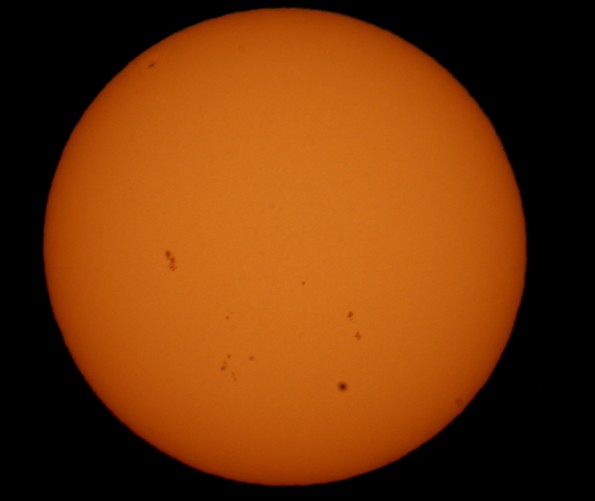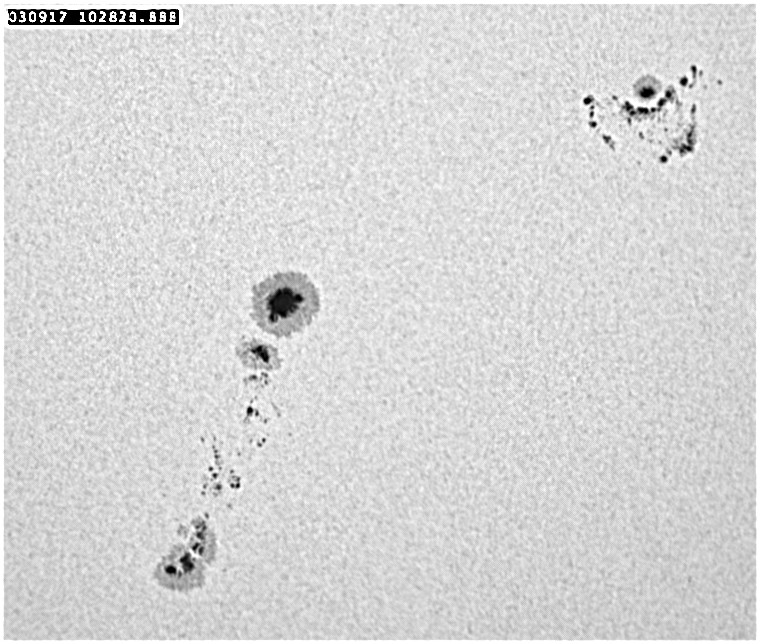
HOME | Astrophotos | Astro Science | Equipment | Resources/Links | Contact Us |
Photographing the Sun with a Filter
Viewing the sun can be fun when done safely. I have three ways of viewing the sun:
(1) White light solar filter
(2) Baader Herschel Solar Prism
(3) Hydrogen-Alpha Coronado Solar Scope
 These photos were taken using a white light solar filter. It slips over my telescope's objective (the lens in front) to reduce the intensity of the visible, infrared, and ultraviolet light entering the telescope to a level of intensity that's safe for my eyes and telescope The filter blocks most of the incoming light, about 99.999%! I have two types of these white light filters. The glass type creates a golden yellow sun. The Baader fillm type uses a polymer film metalized on both sides. It creates a more gray scale type image. I like both types, some people prefer one over another.
These photos were taken using a white light solar filter. It slips over my telescope's objective (the lens in front) to reduce the intensity of the visible, infrared, and ultraviolet light entering the telescope to a level of intensity that's safe for my eyes and telescope The filter blocks most of the incoming light, about 99.999%! I have two types of these white light filters. The glass type creates a golden yellow sun. The Baader fillm type uses a polymer film metalized on both sides. It creates a more gray scale type image. I like both types, some people prefer one over another.
Both of the white light solar filters fit over the telescope's objective (the lens in front). In some inexpensive telescopes they provide a solar filter that fits over the eyepiece. However, NEVER use this type of filter. Use a hammer to crush this filter so you or others will never be harmed. It can cause permanent blindness if it cracks because of heat focused on the filter.
Sunspots are formed continuously as the Sun's magnetic field actively moves through the Sun. The sunspots have lifetimes of days or perhaps one week or a few weeks.
At its equator, the sun rotates in about 24 days. A sunspot seems to move from left to right.
Sunset activity has a cycle of about 11 years. To see where we are now in the solar cycle, go to
http://solarscience.msfc.nasa.gov/predict.shtml
Here are a few of my photos taken using these white light filters:
This was the first photo of the sun I ever took. I was practicing to get ready for our trip to Bryce Canyon National Park for the 2012 Annual Solar Eclipse:

This photo was taken at LaPine, Oregon, on June 20, 2013.

This image was taken early in September of 2017. It shows two large groups of sunspots.
You can also see the granulation on the Sun's surface.
